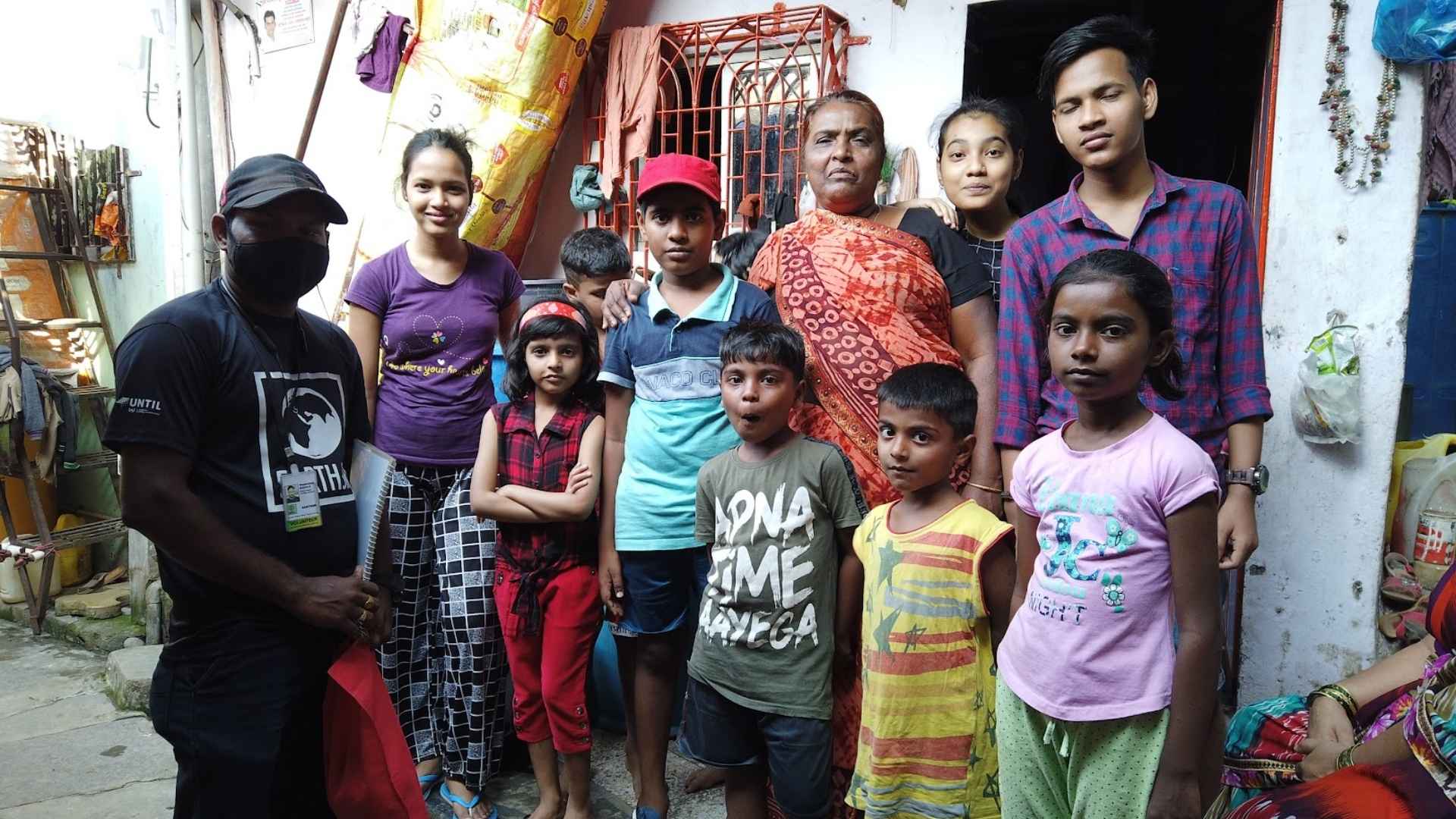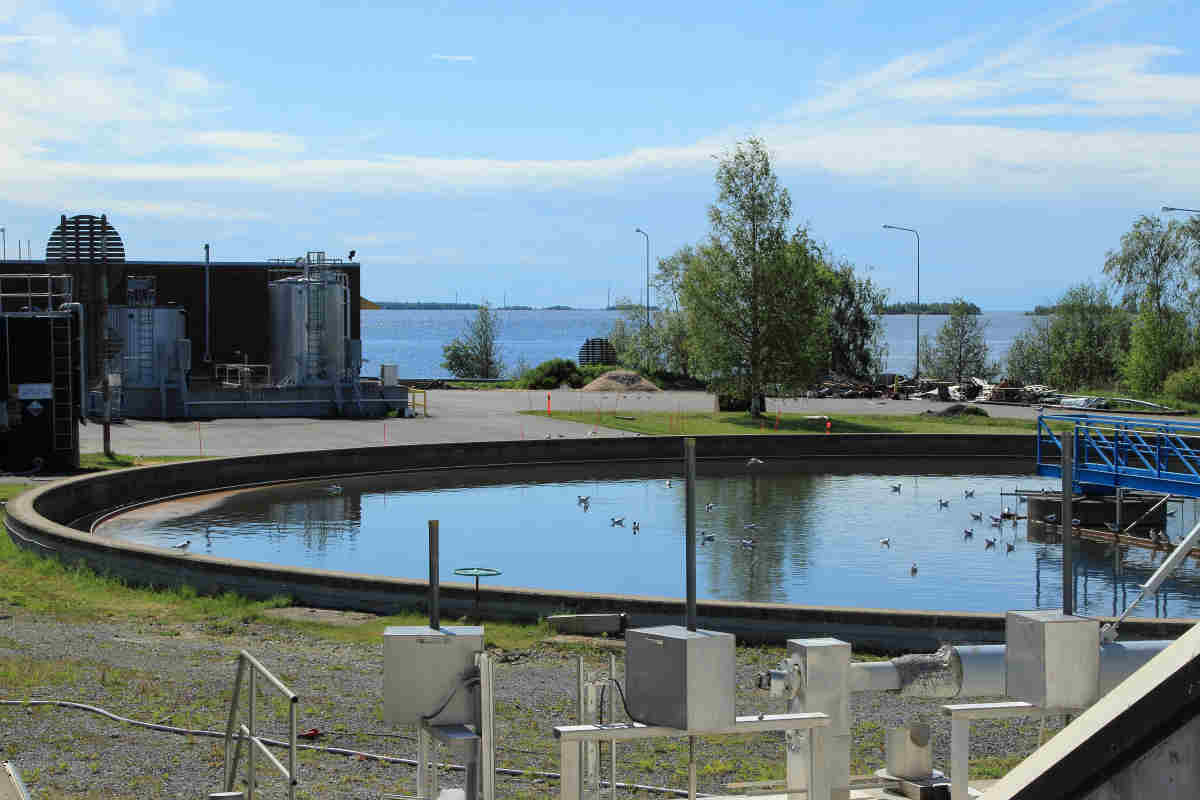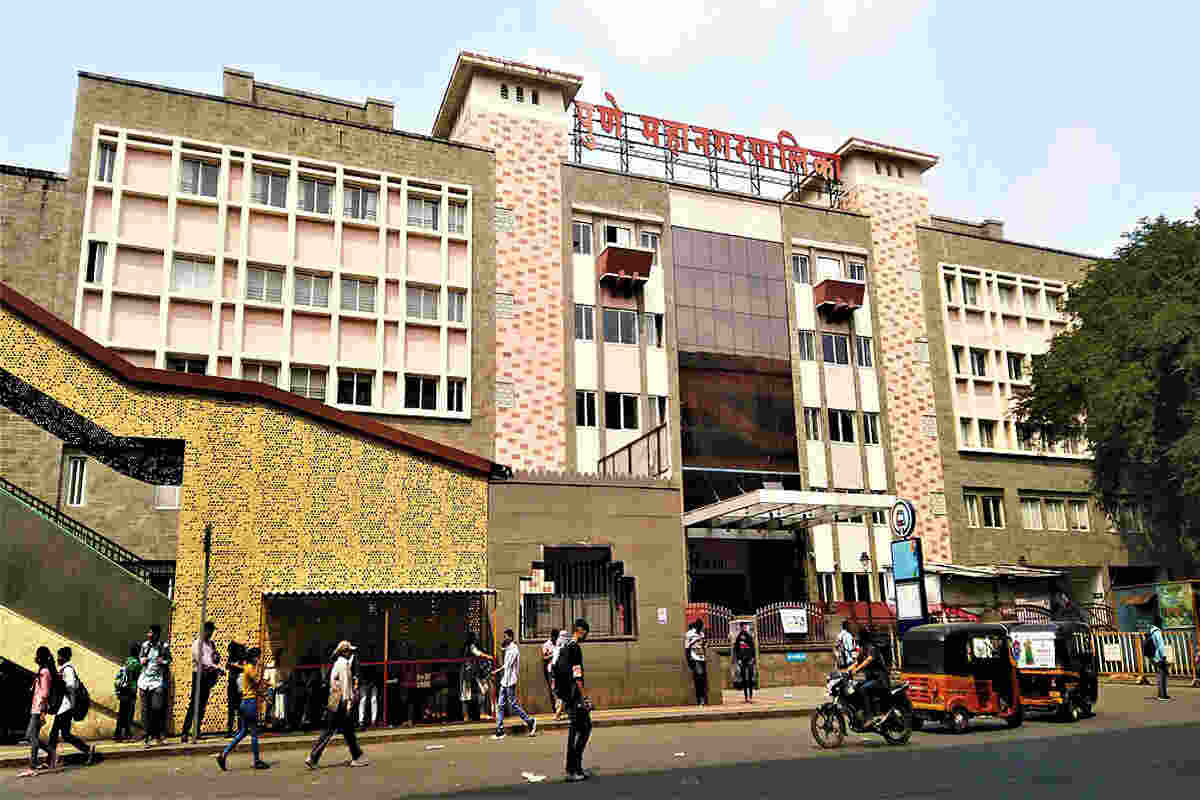In a world grappling with the escalating consequences of climate change, the need for carbon-neutral communities has never been more urgent. According to the Global Carbon Atlas (2023), the world emitted over 37 billion metric tons of carbon dioxide (CO2) in the past year alone—a staggering figure contributing to rising global temperatures, erratic weather patterns, and the depletion of natural ecosystems.
The consequences are already visible: melting glaciers, extreme droughts, and catastrophic storms, all of which threaten both human and ecological survival. Scientists warn that if global warming exceeds 1.5°C above pre-industrial levels, the damage could be irreversible, making carbon neutrality not just a sustainability goal but a necessity.
At the forefront of this movement is Earth5R, a globally recognized sustainability organization that champions hyperlocal action to build carbon-neutral communities. Founded in 2014, Earth5R focuses on empowering local citizens and communities to drive sustainable change. Their model is based on the belief that while global policies are crucial, local, grassroots initiatives are the real catalysts for immediate and measurable environmental impact.
The Science Behind Carbon Neutrality
As the world grapples with the accelerating consequences of climate change, achieving carbon neutrality has become a fundamental objective for nations, corporations, and communities alike. In simple terms, carbon neutrality refers to balancing the amount of carbon dioxide (CO2) emitted into the atmosphere with an equivalent amount of CO2 removed or offset, resulting in net-zero emissions.
The urgency for carbon neutrality is underscored by mounting scientific evidence. According to the Intergovernmental Panel on Climate Change (IPCC), limiting global warming to 1.5°C above pre-industrial levels—the target set by the Paris Agreement—requires global carbon emissions to reach net-zero by 2050. The IPCC further highlights that every fraction of a degree matters—0.5°C of additional warming could expose an estimated 62 to 457 million people to climate-related risks such as droughts, floods, and heatwaves.
Understanding Carbon Footprints and Emissions
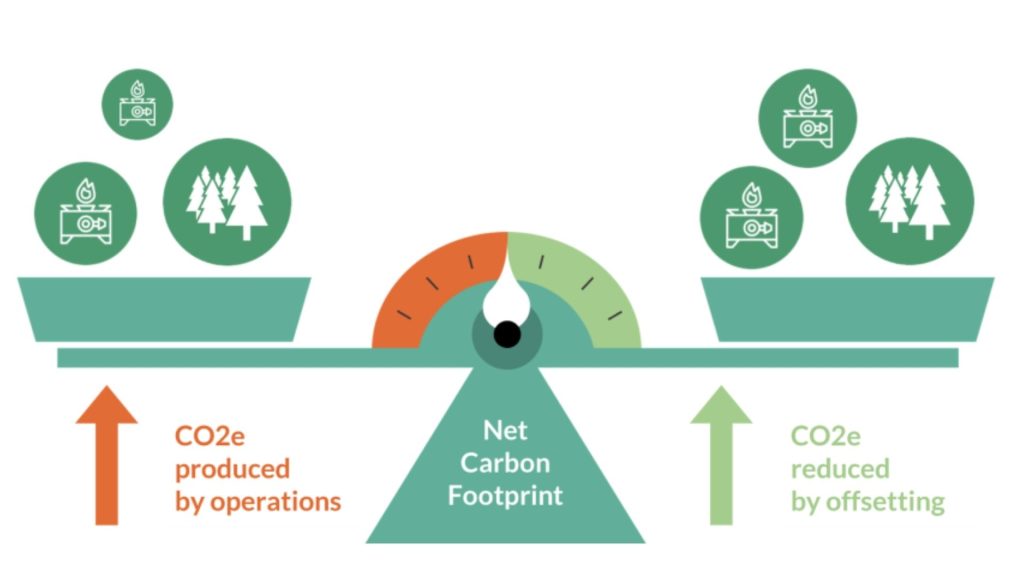
To appreciate the significance of carbon neutrality, it is essential to understand how carbon footprints are measured. A carbon footprint refers to the total amount of greenhouse gases (GHGs)—primarily CO2, but also methane (CH4) and nitrous oxide (N2O)—emitted directly or indirectly by an individual, organization, or activity..
Carbon Reduction vs. Carbon Offsetting: Complementary Approaches
While both carbon reduction and carbon offsetting are essential components of achieving neutrality, they serve distinct functions. Carbon reduction involves minimizing emissions at the source by transitioning to low-carbon practices, whereas carbon offsetting compensates for unavoidable emissions through external projects that absorb or prevent an equivalent amount of CO2 from entering the atmosphere.
Scientific Evidence and Data: The Impact of Carbon-Neutral Practices
The effectiveness of carbon-neutral strategies is backed by robust scientific research. A 2021 study by the International Energy Agency (IEA) concluded that replacing fossil fuel power plants with renewable energy could cut global CO2 emissions by 75% by 2050, significantly mitigating climate change. Similarly, the United Nations Environment Programme (UNEP) reported that nature-based solutions such as afforestation and soil carbon storage could contribute up to 30% of the required CO2 reductions by 2030.
Hyperlocal Action: The Core of Earth5R’s Model
What is Hyperlocal Action?
Hyperlocal action refers to localized, community-led solutions that tackle environmental issues directly within a neighborhood or small geographic area. Unlike broad national policies, hyperlocal initiatives are faster to implement, directly engage local residents, and are often more responsive to the specific needs of the community.
For example, while a country-wide waste management policy may take years to show impact, a neighborhood-level composting program can immediately reduce landfill contributions and methane emissions.
Earth5R’s Hyperlocal Strategies: Small-Scale, Big Impact
Energy efficiency is another cornerstone of Earth5R’s hyperlocal blueprint. By promoting solar panel installations, energy audits, and the use of low-carbon appliances, Earth5R helps communities reduce their reliance on fossil fuels. For example, in Mumbai’s slums, Earth5R introduced solar-powered lighting systems in areas with unreliable electricity access.
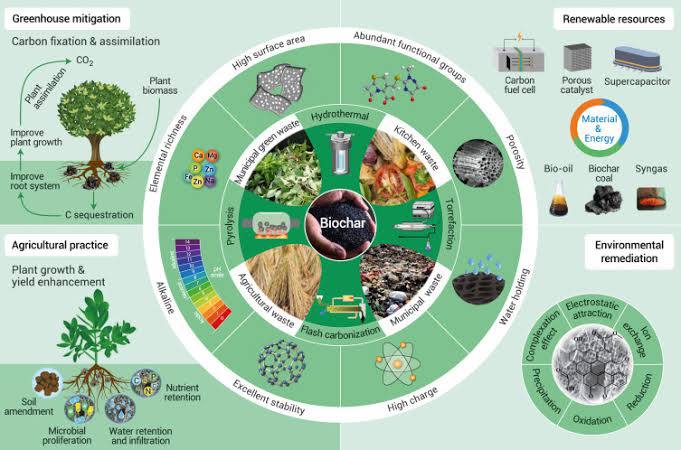
The first image illustrates the multifunctional benefits of biochar, highlighting its role in greenhouse gas mitigation, agricultural enhancement, renewable energy production, and environmental remediation.
This not only reduced the community’s dependence on carbon-heavy grid electricity but also cut energy costs by 45% for local households. The adoption of low-energy appliances such as LED bulbs and efficient cooking stoves further decreased energy consumption and emissions.
Scientific Backing: Hyperlocal Solutions Deliver Measurable Results
The effectiveness of hyperlocal sustainability initiatives is supported by robust scientific research. A 2022 report by C40 Cities, a global network of municipalities committed to climate action, revealed that local sustainability initiatives—such as energy efficiency programs, waste reduction efforts, and green mobility—could reduce urban carbon emissions by up to 25%. This highlights the transformative power of community-driven action, showing that even small-scale interventions can deliver substantial environmental benefits.
Key Components of Earth5R’s Carbon-Neutral Blueprint
Renewable Energy Integration: Powering a Sustainable Future
At the heart of Earth5R’s blueprint is the integration of renewable energy sources such as solar, wind, and hydroelectric power into residential and commercial areas. This transition reduces dependence on fossil fuels, the primary driver of carbon emissions. According to the International Renewable Energy Agency (IRENA), replacing fossil fuels with renewables could slash global CO2 emissions by 70% by 2050, making this a critical pillar of the carbon-neutral transition.
Earth5R’s solar panel installation project in Mumbai slums is a powerful example of how localized renewable adoption can yield measurable benefits. In areas with unreliable electricity access, Earth5R collaborated with local communities to install solar-powered lighting systems.
Sustainable Waste Management: Closing the Loop
Waste management is another cornerstone of Earth5R’s blueprint, aimed at reducing the carbon-intensive impact of landfill waste. When organic waste decomposes in landfills, it releases methane (CH4), a greenhouse gas 25 times more potent than CO2. Additionally, the production and disposal of plastic generates substantial emissions, further contributing to the climate crisis.
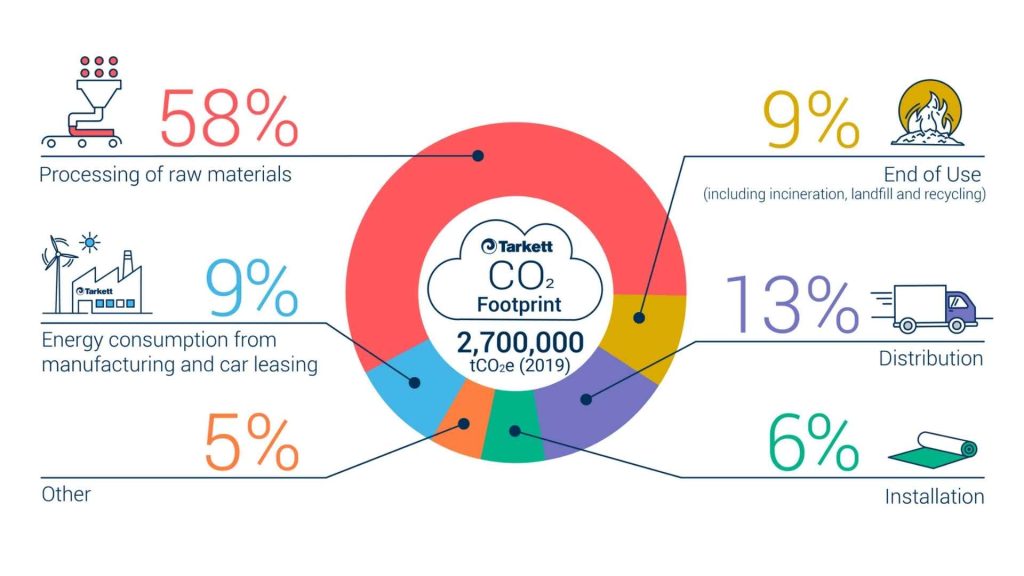
To tackle this, Earth5R has implemented waste segregation, recycling, and composting programs in multiple Indian cities. One of the most successful initiatives is their plastic waste collection and recycling drive in Pune. Through door-to-door awareness campaigns, Earth5R encouraged households to separate plastic waste, which was then collected, sorted, and sent for recycling.
A Comprehensive, Scalable Model for Carbon Neutrality
Earth5R’s carbon-neutral blueprint is not just a theoretical framework—it is a practical, evidence-based model with proven results. By combining renewable energy integration, waste management, water conservation, green infrastructure, and education, the organization demonstrates how localized action can generate measurable reductions in carbon footprints. Moreover, the scalability of Earth5R’s initiatives makes them a replicable solution for cities worldwide, offering a clear path toward sustainable, carbon-neutral communities.
Real-World Case Studies of Earth5R’s Hyperlocal Impact
The effectiveness of Earth5R’s hyperlocal action model is best illustrated through its real-world impact on communities across India. By implementing renewable energy solutions, waste management programs, and urban greening projects, Earth5R has successfully reduced carbon footprints, improved local sustainability, and empowered citizens to lead eco-conscious lifestyles.
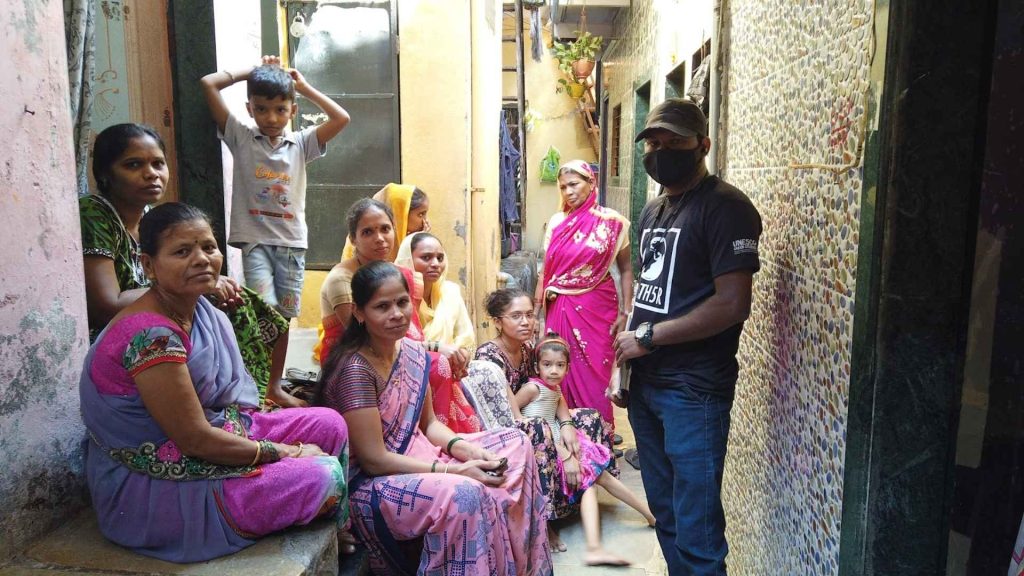
Mumbai’s Slum Solar Electrification Project: Powering Lives Sustainably
In the sprawling slums of Mumbai, home to over 9 million residents, access to reliable and sustainable electricity remains a major challenge. Most low-income households rely on kerosene lamps or diesel generators, both of which are not only costly but also emit high levels of carbon dioxide (CO2) and other pollutants. According to the International Energy Agency (IEA), kerosene lamps emit approximately 200 million metric tons of CO2 annually worldwide, making them a significant contributor to climate change.
To address this, Earth5R launched a solar electrification project aimed at providing clean, renewable energy to underserved slum communities. Through collaborations with local NGOs and renewable energy firms, Earth5R facilitated the installation of solar panels on slum rooftops. These panels generated enough power to light homes, charge mobile devices, and power small appliances, reducing the community’s dependence on fossil fuel-based energy.
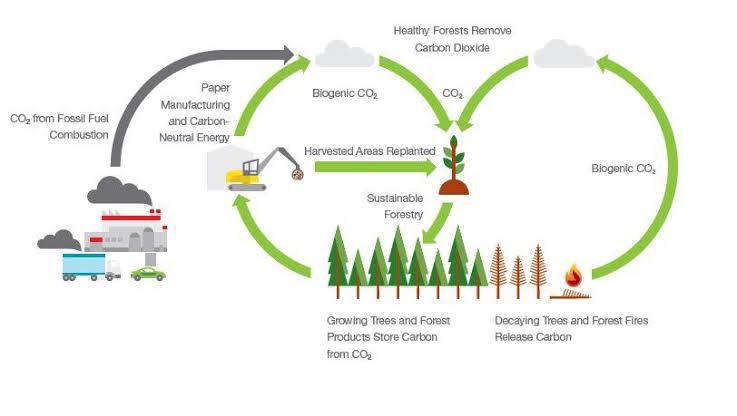
The second image depicts the carbon cycle in sustainable forestry, showing how trees store carbon, and the harvested areas are replanted, promoting carbon neutrality through continuous forest growth and reforestation.
The impact was both environmental and economic. By switching from kerosene to solar, the project cut CO2 emissions by approximately 3.2 metric tons annually per household, according to Earth5R’s sustainability reports. Additionally, families saved up to 40% on their monthly energy expenses, alleviating financial strain. The initiative also improved indoor air quality, as residents no longer burned polluting fuels indoors.
Waste Management in Pune Neighborhoods: Transforming Trash into Treasure
In Pune, India, rapid urbanization has led to poorly regulated waste disposal, with over 1,800 metric tons of waste generated daily. Much of this waste ends up in landfills, emitting methane (CH4)—a greenhouse gas 25 times more potent than CO2. Additionally, unregulated plastic disposal clogs drainage systems, causes flooding, and releases toxic microplastics into the environment.
To combat this, Earth5R initiated a community-led waste management program in Pune’s residential neighborhoods. The project focused on waste segregation at source, encouraging households to separate biodegradable waste from recyclables. Earth5R also established collection centers where plastic waste was sorted and sent for recycling, preventing it from reaching landfills.
The results were remarkable. Within 18 months, the initiative diverted over 40 metric tons of plastic waste from landfills, preventing the emission of approximately 100 metric tons of CO2-equivalent greenhouse gases. Moreover, by composting organic waste, the community reduced its methane emissions and generated nutrient-rich compost for local farmers.
Urban Gardening in Bangalore: Greening the Concrete Jungle
Bangalore, once known as the “Garden City of India,” has faced rapid urbanization and diminishing green spaces over the past two decades. The proliferation of concrete structures has led to a rise in urban heat islands, increased air pollution, and reduced biodiversity. The World Economic Forum (WEF) reports that urban areas with less vegetation experience temperatures that are 3-5°C higher than those with adequate green cover, contributing to higher energy consumption for cooling.
To counteract this, Earth5R introduced urban gardening initiatives in several Bangalore neighborhoods. The program promoted rooftop and balcony gardens, encouraging residents to grow their own herbs, vegetables, and ornamental plants.
Challenges and Solutions in Scaling Carbon-Neutral Communities
Challenges: Navigating the Roadblocks
One of the primary challenges in building carbon-neutral communities is community resistance. Despite mounting evidence of climate change’s destructive impact, many individuals and businesses remain reluctant to adopt sustainable practices. This resistance often stems from lack of awareness, misinformation, or fear of financial burdens.
Policy barriers further hinder scalability. Inconsistent government regulations, lack of incentives, and bureaucratic red tape often slow down the expansion of green initiatives. In many countries, renewable energy policies fluctuate due to changing political priorities, making it difficult for organizations to secure long-term support.
Solutions: Overcoming the Barriers
To counter community resistance, incentive programs can encourage participation in sustainable initiatives. Offering carbon credits, financial rebates, or tax breaks motivates individuals and businesses to reduce their emissions. For example, Sweden’s carbon tax policy, which provides tax relief for businesses adopting low-carbon practices, has helped the country reduce its emissions by 27% since 1990, while still maintaining economic growth.
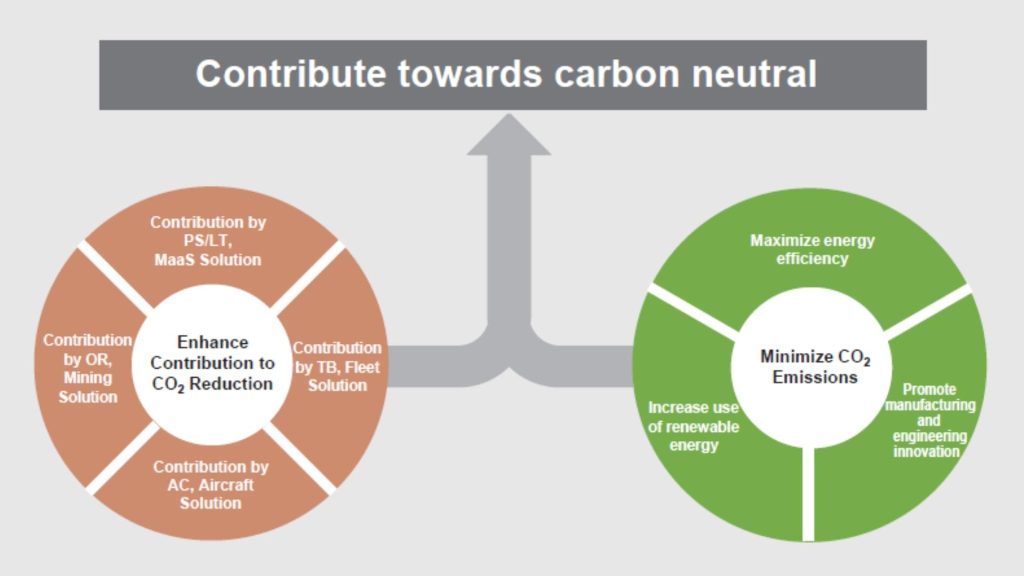
Collaborations with local authorities and NGOs are also vital for scaling carbon-neutral communities. By partnering with municipal governments, Earth5R has been able to expand its initiatives and access public funding. For instance, in Pune, Earth5R worked with local housing societies and the city’s municipal corporation to implement waste management programs.
A Roadmap for Sustainable Expansion
The Road Ahead: Policy Recommendations and Future Prospects
While Earth5R’s carbon-neutral blueprint has demonstrated remarkable success at the local level, the next step lies in expanding its reach and embedding its principles into government policies, corporate strategies, and global sustainability frameworks. To create a lasting impact, policymakers, organizations, and technology leaders must collaborate to scale hyperlocal action into global change.
Policy Advocacy: Institutionalizing Carbon-Neutral Communities
One of the most effective ways to accelerate the transition to carbon neutrality is through government-backed policies and incentives. By introducing tax benefits, grants, and regulatory support for carbon-neutral initiatives, governments can motivate individuals, businesses, and housing societies to adopt sustainable practices.
For instance, in Sweden, the government offers tax deductions of up to 50% on labor costs for households installing solar panels and energy-efficient systems. This policy has significantly increased solar adoption rates, contributing to the country’s goal of becoming fossil-free by 2045.
Replication and Scalability: Expanding Earth5R’s Blueprint Globally
The success of Earth5R’s hyperlocal initiatives in cities like Mumbai, Pune, and Bangalore demonstrates that community-driven sustainability models can deliver measurable results. The next step is to replicate and scale this blueprint across other urban and rural regions. By creating an open-source model, Earth5R aims to empower grassroots organizations, NGOs, and municipal governments worldwide to implement similar projects in their own communities.
Replication involves standardizing the blueprint, making it adaptable to different geographies and socio-economic contexts. For example, while Mumbai’s slum solar project focused on energy access, the same model could be applied to remote villages in Africa or Southeast Asia, where energy poverty is prevalent. Similarly, Earth5R’s waste management model in Pune can be replicated in coastal regions where plastic pollution is a major threat.
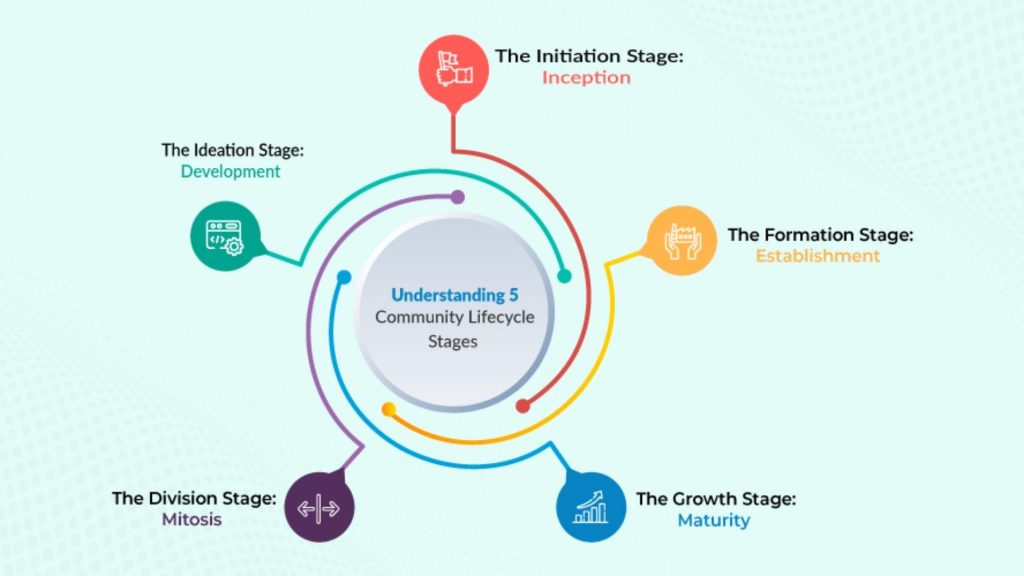
Earth5R’s Hyperlocal Blueprint – Paving the Path to Carbon-Neutral Communities
In a world increasingly threatened by climate change, Earth5R’s hyperlocal action model stands out as a beacon of hope and innovation. By prioritizing community-driven solutions, sustainable technologies, and grassroots empowerment, Earth5R has demonstrated that carbon neutrality is achievable—not through distant, large-scale interventions, but through localized, collective efforts. The organization’s blueprint for carbon-neutral communities offers a replicable and scalable model, proving that small actions at the neighborhood level can trigger large-scale environmental impact.
Scientific evidence underscores the effectiveness of localized sustainability models. According to a 2023 report by C40 Cities, community-driven sustainability initiatives can reduce urban emissions by up to 25%, highlighting the scalability potential of Earth5R’s blueprint. Additionally, the International Renewable Energy Agency (IRENA) reports that small-scale solar and wind installations contribute significantly to decarbonizing local grids, demonstrating the impact of grassroots energy transitions.
FAQs on Earth5R’s Carbon-Neutral Communities Blueprint through Hyperlocal Action
What is Earth5R’s Carbon-Neutral Communities Blueprint?
Earth5R’s Carbon-Neutral Communities Blueprint is a sustainability model that empowers local communities to reduce their carbon footprints through hyperlocal action. It focuses on renewable energy adoption, waste management, water conservation, and green infrastructure to achieve net-zero carbon emissions at the neighborhood level.
What does hyperlocal action mean in the context of sustainability?
Hyperlocal action refers to community-driven, small-scale sustainability efforts that address environmental challenges at the neighborhood or local level. This includes initiatives such as solar panel installations, urban gardening, and localized waste recycling, which collectively contribute to carbon neutrality.
How does Earth5R’s model help reduce carbon emissions?
Earth5R’s model reduces carbon emissions by implementing eco-friendly practices at the community level. It promotes renewable energy usage, circular waste management, and carbon sequestration through urban greening. By replacing fossil-fuel energy with solar power and diverting waste from landfills, the blueprint significantly lowers CO2 output.
What are some key components of Earth5R’s Carbon-Neutral Blueprint?
The key components include renewable energy integration, waste management, water conservation, green infrastructure, and community education. These strategies work together to reduce emissions, enhance resource efficiency, and promote sustainable living.
Why is hyperlocal action more effective than large-scale interventions?
Hyperlocal action is often faster, more adaptable, and community-centric. Unlike large-scale interventions, which face bureaucratic and logistical challenges, hyperlocal initiatives allow for immediate impact through direct community participation, leading to faster adoption and higher accountability.
How does renewable energy play a role in Earth5R’s carbon-neutral model?
Renewable energy is a cornerstone of Earth5R’s blueprint, with the organization promoting solar, wind, and hydroelectric power. Projects like solar panel installations in Mumbai slums have helped communities reduce reliance on fossil fuels, lowering their carbon footprints.
What impact has Earth5R’s waste management programs achieved?
Earth5R’s waste management initiatives have significantly reduced landfill waste and methane emissions. For example, in Pune, their program diverted tons of plastic waste from landfills, preventing the release of harmful greenhouse gases and promoting circular waste economies.
How does Earth5R promote water conservation in local communities?
Earth5R promotes rainwater harvesting, greywater recycling, and efficient irrigation in communities. These methods help reduce water wastage, lower the carbon footprint of water treatment, and ensure sustainable water management.
What role does urban gardening play in Earth5R’s sustainability blueprint?
Urban gardening is a key component of Earth5R’s model that enhances carbon sequestration and air purification. Projects like rooftop farms and community gardens in Bangalore not only absorb CO2 but also promote food security and reduce urban heat islands.
How does Earth5R engage local communities in sustainability efforts?
Earth5R conducts eco-literacy workshops, awareness campaigns, and hands-on sustainability programs. By educating and involving local residents, they foster a sense of ownership and accountability, making climate action a community-driven effort.
What scientific evidence supports Earth5R’s carbon-neutral model?
Earth5R’s blueprint is backed by scientific studies and global data. For instance, a C40 Cities report revealed that hyperlocal sustainability initiatives could reduce urban emissions by up to 25%, highlighting the effectiveness of localized action.
How does technology enhance the effectiveness of Earth5R’s blueprint?
Earth5R leverages AI, IoT, and data analytics to enhance efficiency. For example, AI-powered energy optimization reduces wastage in solar grids, while IoT-enabled carbon monitoring systems track and report real-time emission reductions.
How does Earth5R collaborate with policymakers?
Earth5R advocates for policy changes that support carbon-neutral communities. It pushes for tax benefits, subsidies for renewable energy, and stricter waste management regulations to promote sustainable practices at a systemic level.
Can Earth5R’s blueprint be replicated globally?
Yes, Earth5R’s hyperlocal model is designed for scalability and replication. The organization aims to create an open-source blueprint that can be adapted by NGOs, local governments, and community groups worldwide.
What are the socio-economic benefits of Earth5R’s model?
Beyond environmental impact, Earth5R’s model creates socio-economic benefits by generating green jobs, reducing energy costs, and promoting local food production. For example, solar electrification in Mumbai slums reduced energy expenses for low-income households.
How does Earth5R measure the impact of its initiatives?
Earth5R uses data-driven tracking systems to measure carbon reductions, waste diversion, and energy savings. Their projects report measurable outcomes, such as tons of CO2 reduced or kilograms of plastic waste recycled.
What challenges does Earth5R face in implementing its model?
Challenges include community resistance, financial constraints, and inconsistent policy support. However, Earth5R overcomes these barriers through incentive programs, partnerships with NGOs, and leveraging technology.
How can individuals contribute to Earth5R’s mission?
Individuals can support Earth5R by volunteering, participating in sustainability programs, or adopting eco-friendly practices in their own lives. Small actions, like reducing waste, using renewable energy, or practicing urban gardening, contribute to the larger movement.
What future prospects does Earth5R envision for its model?
Earth5R aims to scale its blueprint globally, integrating AI and digital platforms to enhance impact measurement. The organization envisions carbon-neutral neighborhoods becoming the norm, contributing to global decarbonization efforts.
Why is Earth5R’s hyperlocal blueprint important in the fight against climate change?
Earth5R’s blueprint offers a proven, scalable solution to combat climate change. By empowering communities to take local action, it creates tangible carbon reductions while promoting socio-economic resilience and sustainability at the grassroots level.
Call to Action: Building a Carbon-Neutral Future, One Community at a Time
The fight against climate change is no longer a distant challenge—it is an urgent, present-day reality. The consequences of inaction are already visible in rising global temperatures, unpredictable weather patterns, and deteriorating ecosystems.
However, Earth5R’s hyperlocal sustainability model offers a tangible, practical solution—one that empowers individuals, neighborhoods, and policymakers to become proactive agents of change. The time to act is now, and the power to drive climate resilience lies in the hands of every community and every citizen.
Empowering Communities to Lead the Change
Communities are the backbone of sustainable transformation. By embracing hyperlocal sustainability, neighborhoods can drastically reduce their carbon footprints while enhancing their self-sufficiency and resilience. Simple actions—like adopting rooftop solar panels, implementing waste segregation programs, and creating community gardens—can lead to cumulative, large-scale impact.
The Earth5R model proves that small-scale, local solutions can significantly reduce global emissions. According to a 2022 report by the United Nations Environment Programme (UNEP), if 10% of the world’s urban neighborhoods adopted localized solar and waste management programs, global CO2 emissions could drop by roughly 1.5 billion metric tons annually—equivalent to the emissions of 400 coal-fired power plants. This highlights the immense potential of community-driven sustainability in tackling the climate crisis.
The Role of Policymakers in Scaling the Movement
Policymakers have a pivotal role in scaling carbon-neutral communities by enacting supportive policies, financial incentives, and regulatory frameworks. Governments can accelerate the transition by offering tax breaks for renewable energy adoption, subsidizing eco-friendly infrastructure, and enforcing strict waste management regulations.
Earth5R’s advocacy efforts push for policy changes that prioritize community-driven sustainability, ensuring that local governments provide technical and financial support for neighborhood-level initiatives. By aligning grassroots action with policy frameworks, cities and nations can create systemic change that transforms local sustainability efforts into national climate strategies.
– Authored by Mridu Mishra

